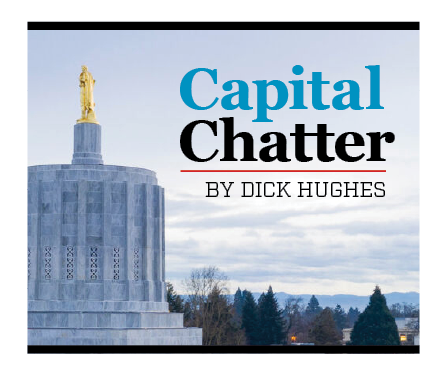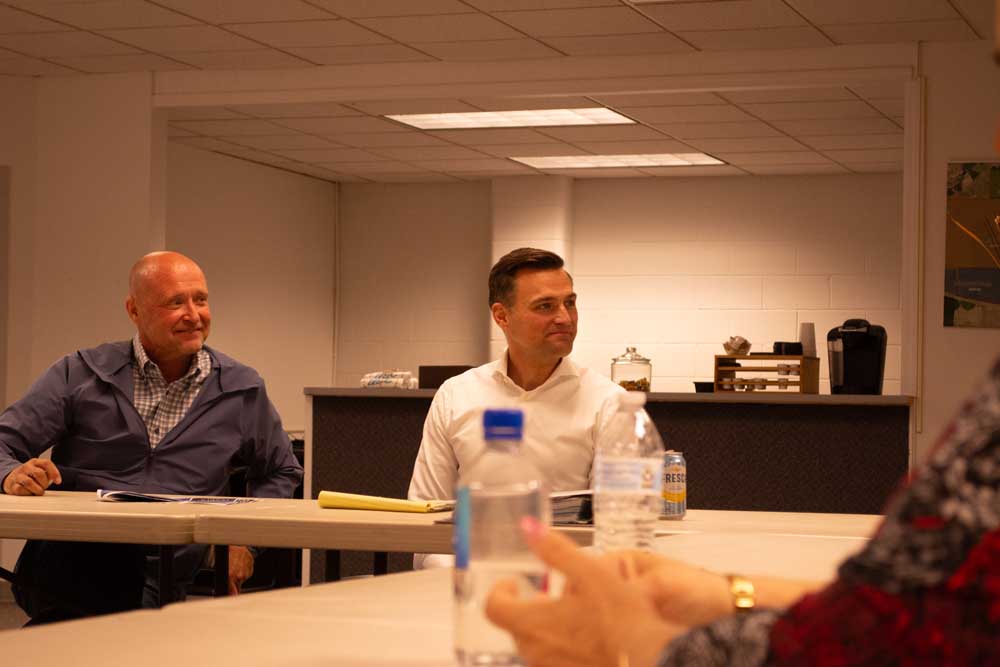Capital Chatter: Prospects for bipartisanship took dim
Published 5:00 pm Thursday, December 1, 2022

- capital chatter logo
I hope I’m wrong.
Trending
Based on the Nov. 8 election results, prospects for bipartisanship in the 2023 Legislature look dim.
Of course, I’m talking about bipartisanship on the challenging issues – the ones that galvanize interest groups and rile the public. The vast majority of bills are routine and pass across party lines. In other words, Republican governor candidate Christine Drazan, Democratic winner of the governor’s race Tina Kotek and Democrat-turned-independent gubernatorial candidate Betsy Johnson frequently voted the same way while lawmakers, despite their sharp differences as candidates.
Here are five reasons for my pessimism:
Trending
1. Oregonians not only remain deeply divided, but the divisions have deepened.
The day after the election, John Horvick of DHM Research compared geographic differences between the governor’s races in 1986 and this year. In 1986, the candidates were Democrat Neil Goldschmidt and Republican Norma Paulus.
In the general election that year, there was a difference of 13 percentage points between the Democratic and Republican candidates in the median – or typical – Oregon county. This year, that median difference between the D and R candidates – Kotek and Drazan – had tripled to 39 percentage points.
Wowser.
2. Almost every winner, except the new governor, can claim a mandate.
And those mandates will conflict.
It would be difficult for Kotek to claim a mandate from voters. As of Thursday noon, she had 46.96% of the vote, compared with 43.54% for Drazan, 8.63% for Johnson, 0.41% for Donice Noelle Smith, 0.35% for R. Leon Noble and 0.11% for write-in candidates. To put it another way: 915,000 Oregonians supported Kotek, but more than 1 million voted for someone else.
The legislative story is the opposite. It’s easy to picture most legislative winners waltzing into the State Capitol on Jan. 9 believing that their constituents gave them a decree to turn their campaign promises into law posthaste. Yet each legislator is only one of 90.
Most lawmakers elected Nov. 8, many of whom will be new to the Legislature, won easily regardless of their party. As of the calculations I did Wednesday night, House candidates triumphed by an average of 35 percentage points and Senate winners by 22 percentage points. Those results are skewed by some candidates having no opposition other than write-ins. But still …
Only five House races and one Senate race had winning margins smaller than 3.5 percentage points. The thinnest in the House was District 40, where Democrat and Independent Annessa Hartman of Gladstone led Republican and Libertarian Adam Baker of Oregon City by 0.54 percentage point – 179 votes.
In Senate District 20, Rep. Mark Meek, D-Gladstone, defeated incumbent Sen. Bill Kennemer, R-Oregon City, by 0.81 percentage point – 506 votes. By the way, Kennemer also had the Independent and Libertarian party nominations.
3. Meanwhile, both major parties can claim victory.
The election reenergized both major parties. What Ed Dover, a retired politics professor from Western Oregon University, recently told the Salem City Club was that a “blue tsunami” held off the predicted “red wave.”
Democrats won the governorship, keeping their Portland metro base intact, and elected Christina Stephenson to the nonpartisan office of state labor commissioner. They maintained legislative majorities and won Oregon’s new congressional seat. They ensured passage of groundbreaking ballot measures, including ones to tighten gun ownership and restrict legislative walkouts.
Meanwhile, Republicans didn’t do as well as hoped, but they flipped Oregon’s 5th Congressional District seat and ended the Democratic supermajorities in the state Senate and House. They made inroads in urban county boards of commissioners and held their own in other areas. Drazan ran a credible statewide campaign that helped Republicans at all levels.
Neither party seems to recognize that the majority of voters – especially the wide swath of unaffiliated voters – are fed up with politics as usual. Johnson didn’t triumph, but national polling underscores hunger for new approaches, including a third party.
4. This was not a friendly match.
The 2022 campaign season was not a sports contest where two teams beat each other up on field, then have drinks and pizza together afterward. The persistent, overbearing, misleading negative ads did more than simply dissuade voters from marking their ballot for the opponent. As a Capital Chatter reader pointed out, the attack ads were disrespectful to Oregonians’ voter intelligence.
How deep are the civic wounds? Is it asking too much of legislators, not to mention the governor-elect’s opponents or rank-and-file Oregonians, to quickly forgive and forget what was said about individuals, causes and parties they supported?
5. The very top issues for the state and Legislature are clear. The rest are murky.
Homelessness, coupled with housing, is No. 1. That finally seems obvious.
Add public safety and crime. And then the cost of living.
Those were confirmed by the DHM Research survey conducted for The Oregonian during the gubernatorial campaign.
Then comes a smattering of other issues.
The survey asked respondents to list the most important problem facing Oregon. As Horvick tweeted at the time, it’s worth noting what topics showed up rarely or not at all, including: critical race theory, racial justice/relations, police reform, immigration and health care.
Your turn: Readers, what do you think about the chances for legislative bipartisanship? Please email me with your thoughts.
Shoutout to ORECA: On Thursday, I was on a panel with Springfield Sen. Lee Beyer discussing Oregon politics, news coverage and other topics at the Oregon Rural Electric Cooperative Association annual meeting in Salem. Thanks for having me. Good discussion.





